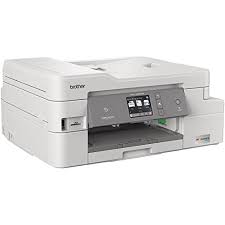Breaking Down the Differences: Monochrome Vs Color Printers
Introduction
Navigating the varying terrain of digital printers is often a challenging task. Understanding the differences between monochrome and color printers, for example, can be daunting. In this comprehensive guide, we aim to educate you on the key distinctions between these two technologies. From quality and speed to cost and user scenarios, we breakdown all the crucial factors you need to make an informed decision. Read on so that the next time you're asked, 'what is the difference between monochrome and color printers?', you'll have a robust answer at the ready.
What Are Monochrome and Color Printers Exactly?
A closer inspection n the world of printing leads us to the difference between monochrome and color printers. In essence, they are distinguished by the number of inks they utilize during the printing process.
- Monochrome Printers: Simplified and streamlined, monochrome printers use a single ink color, primarily black. This feature effectively services the printing of text and images in shades ranging from black to white.
- Color Printers: A step beyond in complexity and flexibility, color printers employ multiple ink cartridges, specifically black, cyan, magenta, and yellow. This broader color palette allows these printers to generate an authentic spectrum of colors for vivid graphics and images, besides regular printing of text.
Understanding these fundamental differences will aid in setting realistic expectations from your printer and help you make an informed choice.

What Makes Monochrome and Color Printers Different?
In a quest to pinpoint the key contrasts between monochrome and color printers, three fundamental areas surface:
1. Print Quality
2. Print Speed
3. Cost Implications
Let's examine each in more detail.

Print Quality: Color Vs. Contrast
The divergence in quality of output between monochrome and color printers is primarily hinged on the type of documents or images being printed:
- Monochrome Printers: They create sharp, clear, and crisp text prints, making them a superior choice for text-based documents like research papers, invoices, and office reports.
- Color Printers: They bring a splash of color to printing, paving the way for vibrant photos and colorful graphical presentations. A color printer goes beyond the abilities of a monochrome, offering high-quality text prints coupled with stunning colored images.
Print Speed Showdown: Monochrome or Color?
Speed is an integral aspect of any printing task, and in this regard, monochrome printers typically take the lead.
- Monochrome Printers: Their simplicity enables faster print times due to working only with one color.
- Color Printers: Their speed is inherently slower as they juggle printing in multiple colors and aligning them perfectly to produce high-quality color output.
It is important to note that actual speed may depend upon the specific model and manufacturer.
Cost Analysis: Price Vs. Performance
An often overlooked, yet crucial factor, when considering printers is the total cost of ownership, including both purchase price and running costs.
- Monochrome Printers: They generally come with a lower upfront cost and economical single cartridge maintenance, making them cost-efficient options for print-heavy environments.
- Color Printers: They bear a higher price tag due to the higher number of cartridges required. This essentially means heightened maintenance and replacement costs, in comparison to monochrome printers.
In conclusion, the choice between monochrome and color printers boils down to what you'll be printing more often, and how much you're willing to spend over the printer's lifespan.
When Should You Prefer Monochrome or Color Printers?
In the debate of which printer type to choose, it truly depends on your specific requirements. One must consider the nature of their printing tasks to determine which approach - monochrome or color - would serve their purposes best.
When Monochrome Printers Shine
Monochrome printers are typically most beneficial in environments where large quantities of text-heavy documents, such as reports, essays, invoices, or any other black-and-white documentation, need to be printed. These situations could involve:
- Corporates or business environments: Monochrome printers offer cost-effective solutions while delivering high volumes of printouts that are chiefly made up of text.
- Home offices: For those working remotely or running a small business from home, a monochrome printer is often an ideal choice owing to its efficiency and maintenance being less complex than color printers.
- Academic institutions: Schools, colleges, and universities typically need printers that can churn out vast amounts of textual documents quickly and reliably.
Opting for Color Printers: A Spectrum of Potential
On the other hand, color printers come to the rescue when both text and colorful images need to be printed at high quality. Some situations where color printers are particularly beneficial include:
- Design studios: Businesses that require frequent and high-quality color printing, such as advertising or interior design firms, would dramatically benefit from a color printer.
- Photography: For professional or amateur photographers looking to print their work, color printers provide the high-resolution, vibrant results needed.
- Hospitals and clinics: Medical facilities often need to print colored patient reports or scans for precise diagnoses.
By understanding your own printing needs, you can make a well-informed decision that optimizes your printer’s potential.
What Are the Pros and Cons of Both Printer Types?
When making a decision between both printer types, there are several key pros and cons to consider.
The Strengths and Limits of Monochrome Printers
Monochrome printers shine in many areas, but also have certain restrictions. Here is an evaluation of these factors:
Pros:
- Speed: Generally, monochrome printers offer faster print speeds than color printers. The simple one-color system ensures quick output.
- Cost-effectiveness: Compared to color printers, they have lower operating costs, primarily because they only require single black ink cartridges.
- Sharp Text Quality: They excel in delivering crisp and clear black and white prints, ideal for text-based printing needs.
Cons:
- Limited to Black and White: It's essentially the main limitation - they are incapable of printing in color. For any printing that needs color, even minimal, monochrome printers fall short.
- Lack Simplicity in Graphic Details: While they provide excellent text quality, these printers lack subtlety when it comes to grayscale graphics.
Reviewing the Merits and Drawbacks of Color Printers
Color printers offer highly versatile printing solutions, encompassing a range of colors and detail-levels. Here are some key benefits and drawbacks to consider:
Pros:
- Versatility: Their ability to print in a spectrum of colors makes them ideal for various tasks such as graphics, photos alongside regular documents.
- High Color Accuracy: The combination of cyan, magenta, yellow, and black (CMYK) results in accurate and vibrant prints.
Cons:
- Pricey to Operate: Although the initial purchase price may be competitive, the cost of replacing multiple color cartridges can be high over time.
- Slower Speed: With the complex color alignment and additional components, color printers typically print slower than their monochrome counterparts.
When deciding between a monochrome and color printer, understanding these pros and cons is essential. Always weigh the potential benefits against the limitations based on your specific needs. Note that these are not exhaustive lists and other specific factors may swing the decision one way or another.
Conclusion
When it comes to costs, monochrome printers typically come out ahead. The single ink cartridge makes them more cost-effective to operate, and they are usually cheaper to purchase. On the other hand, the higher number of cartridges in color printers means increased maintenance and replacement costs. Plus, color printers themselves are usually more expensive.
Related FAQs about what is the difference between monochrome and color printers
Is it cost-effective to have both monochrome and color printers?
It depends on your usage. If you regularly print a high volume of black and white text documents and colored images, having both could be cost-effective. However, if your printing is primarily one or the other, it may be more efficient to choose the one that suits your needs.
For basic office work, which printer is more suitable?
Monochrome printers are usually more suitable for basic office work that involves printing a large number of text-based documents. They offer faster print speeds and reduce running costs, making them an economical choice for office environments.
How does the maintenance of monochrome and color printers vary?
Maintenance for monochrome printers is simpler and cheaper, requiring only one type of ink cartridge. Whereas, color printers need multiple ink cartridges—cyan, magenta, yellow, and black—increasing the complexity and cost of maintenance.


